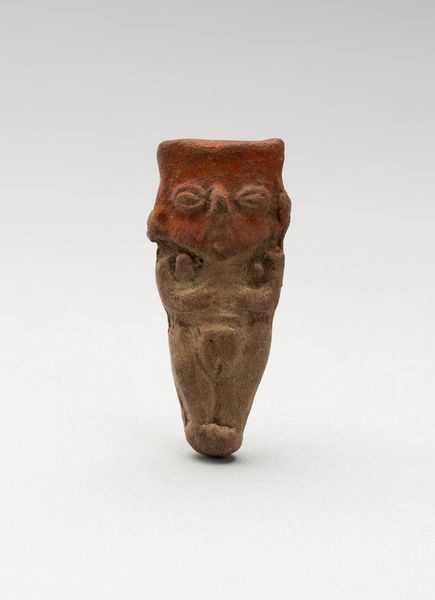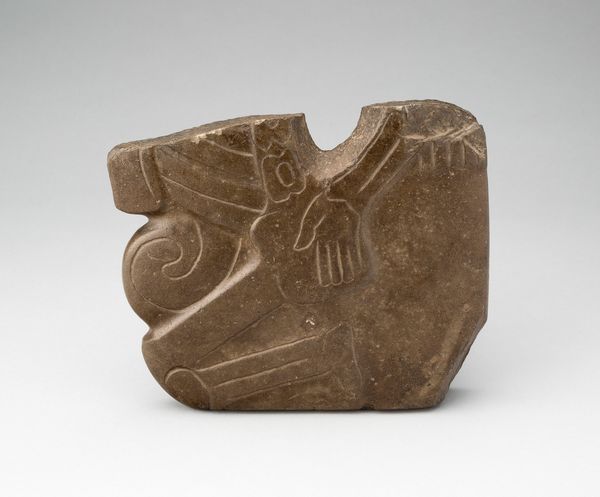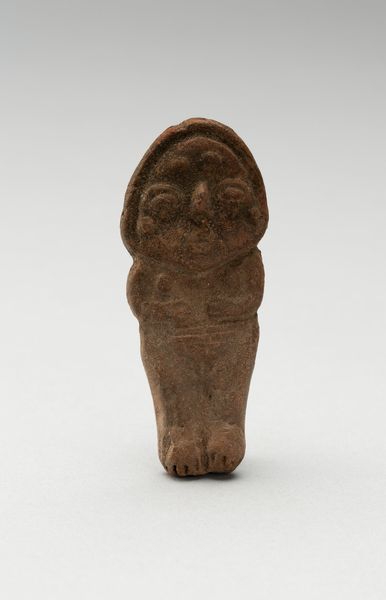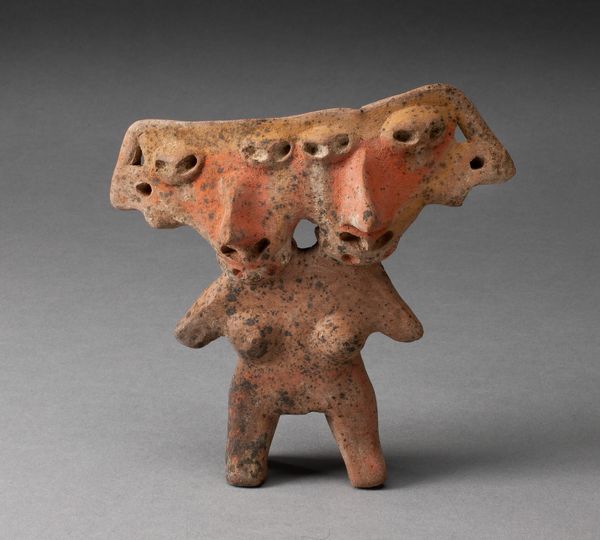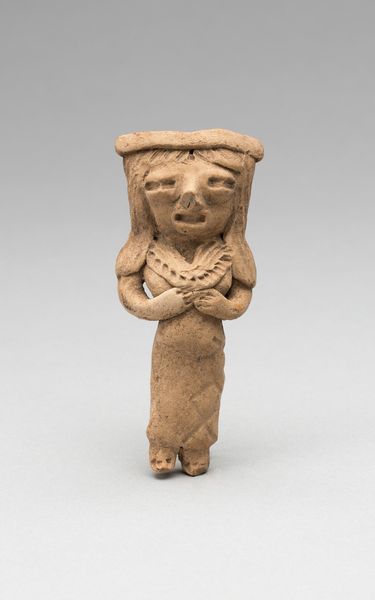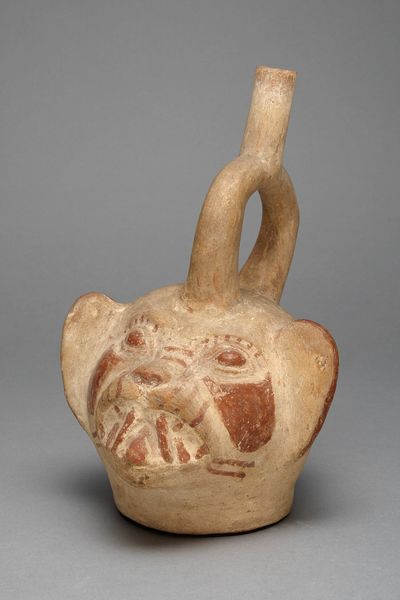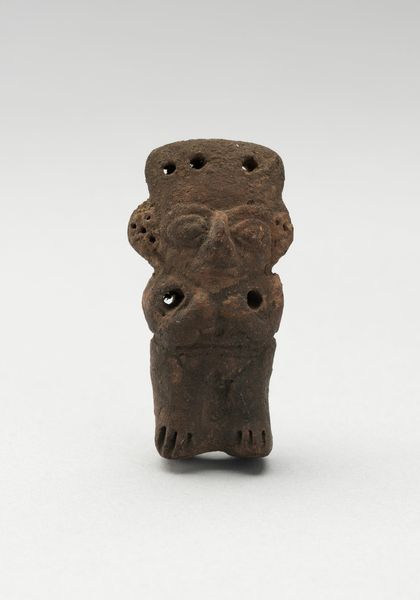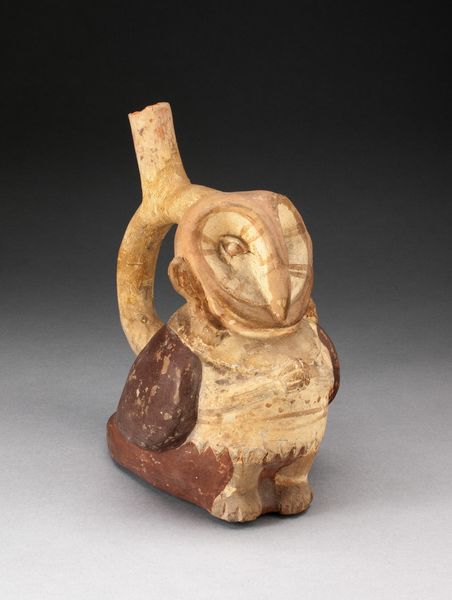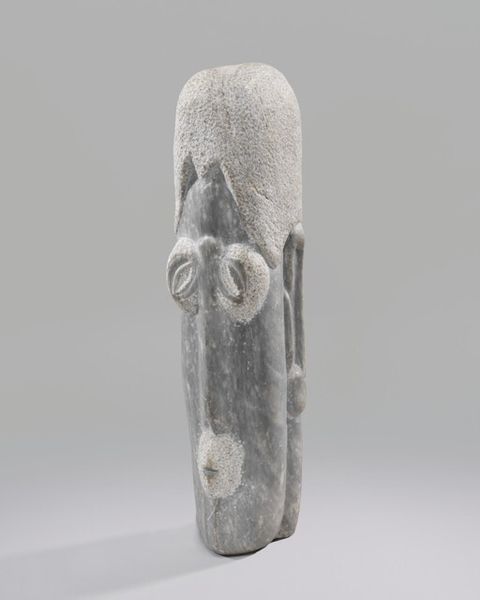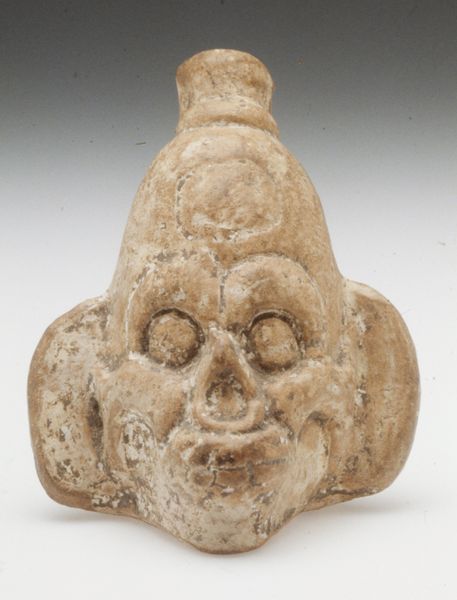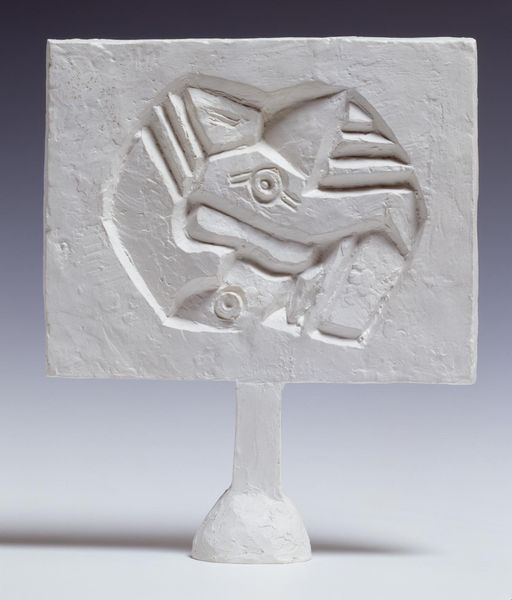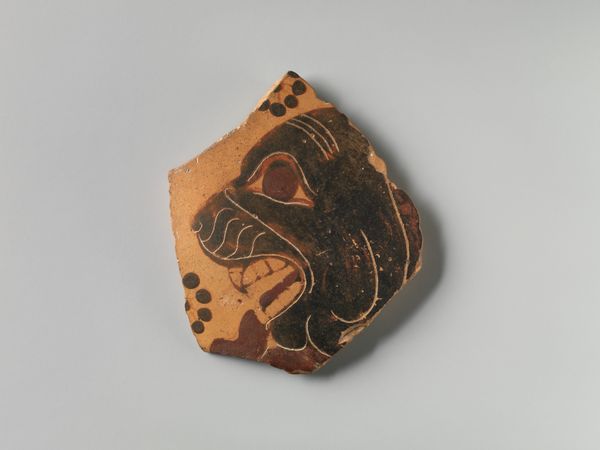
ceramic, terracotta
#
sculpture
#
ceramic
#
terracotta
#
indigenous-americas
Dimensions: 5.7 × 2.9 cm (2 1/4 × 1 1/8 in.)
Copyright: Public Domain
Editor: Here we have a ceramic stamp, dating from around 1000 to 1500, created by the Zapotec people. It depicts what appears to be a plant-like motif. It looks to me like a highly stylized face intertwined with vegetation. What strikes me is the apparent simplicity of the geometric carving. What are your initial thoughts on this work? Curator: This piece is really interesting from a materialist perspective. We should consider the production. The Zapotec people were masters of ceramic production, and stamps like these weren’t high art objects, instead these pieces suggest widespread usage within Zapotec society, for example on fabrics, or on skin. What can you observe about the texture? Editor: I see shallow carved lines that seem to outline the face and leaf-like elements. They were incredibly skilled. The production would have had a big impact on society back then, considering that there weren't very many ways of producing something that was easily replicated. What would be the labor considerations to make sure this stamp was of good quality? Curator: Precisely. Now think about the clay itself – where did it come from? What was the process of preparing it? The skill needed for mining and refinement. That level of access speaks volumes. But, it’s not only labor that needs consideration. Also, where did the skills to create these stamps come from? Editor: I suppose those skills came from years of passing it on through families and communities, right? What do you think someone would feel, using a stamp like this, applying it for their community? Curator: Perhaps that person experiences the work itself becoming part of that fabric, weaving cultural expression into everyday life and imbuing it with ritual significance. It invites us to challenge boundaries between functional object and artistic creation. Editor: Thinking about it that way shifts my perspective entirely. So much meaning embedded in the process. I learned how important is it to appreciate the intricate methods of this artwork’s creation, and consider what this art reveals to us about labor and usage! Curator: Indeed, considering its full implications, understanding how that labor can transform the status and value of these kinds of artworks.
Comments
No comments
Be the first to comment and join the conversation on the ultimate creative platform.
